Italian Police Seize 1 Million Liters of Counterfeit Wine.
Italian police seized over one million liters of counterfeit wine during a series of dawn raids in the northern region of Lombardy. Five were arrested in connection with the production of fake Oltrepò Pavese DOC and PGI wines, Meininger’s Wine Business International reports.
The confiscated bottles contained extra sugar, prohibited grape varieties, and additives to mimic the flavor and aroma of real Oltrepò Pavese wines. Numerous cases were also falsely labeled “organic.” The resulting product was not harmful, according to prosecutors, “just fraudulent.”
The raid was the culmination of a year-long investigation into the Cantina di Canneto wine cooperative, which is located about 35 miles south of Milan, in the Oltrepò Pavese region.
After receiving a tip-off about the co-op’s 2018 vintage, police bugged phones and used video surveillance to obtain the necessary evidence to make their move. It’s currently unknown whether any of the counterfeit wine was exported.
Several high-profile figures were among those arrested, including the Cantina di Canneto cooperative’s chairman, and the vice-chair of the local branch of Assoenologi, Italy’s winemaker’s association.
https://vinepair.com/booze-news/italian-police-counterfeit-wines/
Lear More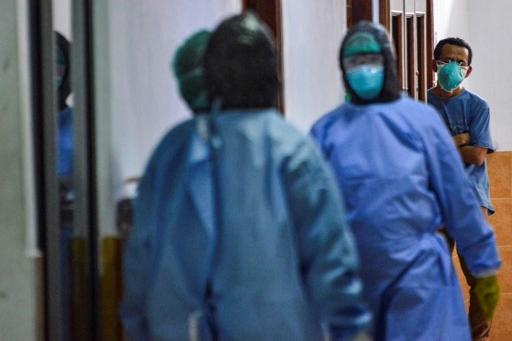
Seven million counterfeit cigarettes seized by police in Limburg
Special units of the federal police seized seven million counterfeit cigarettes during a raid in Lanaken on Monday afternoon.
Assisted by members of the Limburg Special Assistance Unit-Tactical intervention group, the special units raided two industrial sheds- one in Smeermaas and one in Gellik- in part of a major investigation into cigarette fraud.
Having recently discovered the storage sites for the counterfeit cigarettes, Genk customs requested that police raids take place, as there was reason to believe that the storage sites would be guarded by armed men, Het Belang Van Limburg explains.
Although the special units did not find anybody in the sheds during the raids, they discovered and seized the seven million counterfeit cigarettes, spokesperson for the Federal Public Service Finance, Customs and Excise, Francis Adyns, confirmed to Het Nieuwsblad. The counterfeit cigarettes were of the Superking brand, mainly consumed in the U.K.
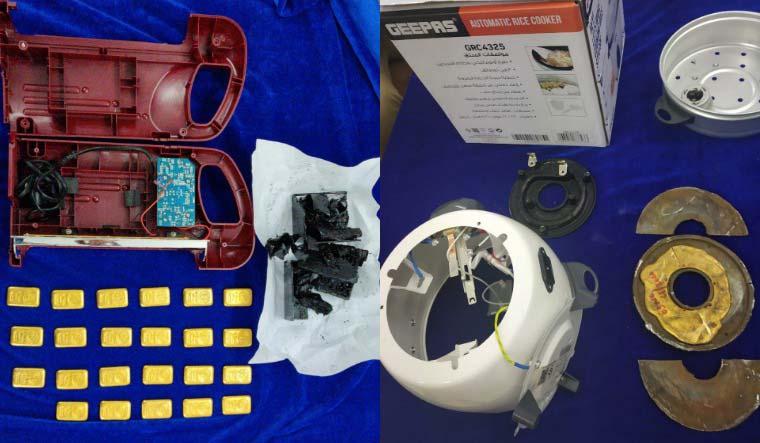
Chennai: Gold worth Rs 1.54 crore seized from juicer, cooker, emergency light.
The Air Intelligence Unit of the Customs seized nearly 4kg of gold, valued at Rs 1.54 crore, in three separate incidents at the international airport in Chennai on Sunday and Monday. The gold was smuggled in an emergency light, rice cooker and electrical juicer, a press release from the Customs revealed.
On Sunday morning, Sharafudheen, a 23-year-old man who arrived via an IndiGo flight from Dubai, was stopped at the exit of the airport. When Customs personnel inspected his checked-in bag, a rice cooker was found. When dismantled, the the rice cooker was found to contain a ring-shaped gold ingot weighing 610gm, worth Rs 25.22 lakh, inside its heating plate. Sharafudheen, a native of Kozhikode, Kerala, was arrested.
On Sunday night, Abdul Jaleel, another native of Kozhikode, was intercepted at the exit of the Chennai Airport. Jaleel, who arrived from Abu Dhabi via Bahrain on a Gulf Air flight, was carrying an electrical juicer. When Customs officials dismantled the juicer, they found a rectangular gold sheet weighing 438gm and valued at Rs 18.11 lakh. The gold sheet was concealed inside the motor of the juicer. Abdul Jaleel is 29 years old.
Mumbai: Gutkha worth Rs 2.74 crore seized from godown in Bhiwandi.
Mira-Bhayandar: In a prize catch for the Food and Drug Authority (FDA) authorities, a huge consignment of gutkha worth more than Rs 2.74 crore was seized from a godown in the Kharbao area of Bhiwandi on Friday.
Based on a specific tip-off, a team led by food safety officer Manek Jadhav along with the local police swooped down on the godown. One person, identified as Amar Bahadur Ramkhilawan Saroj, a resident of Kashimira, was taken into custody. His accomplices, Umakanth Kathe, Faizal and Raju Gupta, managed to evade the dragnet.
Upon checking the premises, the FDA team found hundreds of gunny bags stashed with thousands of sachets of tobacco laced and other banned products. The market value of the seized consignment has been pegged at Rs.2,74, 52, 700.
A case has been registered against the accused.In a prize catch for the Food and Drug Authority (FDA) authorities, a huge consignment of gutkha worth more than Rs 2.74 crore was seized from a godown in the Kharbao area of Bhiwandi on Friday.
https://www.freepressjournal.in/mumbai/mumbai-gutkha-worth-rs-274-crore-seized
Lear MoreMisbranded cosmetics seized from shop.
A two-member team of the Drugs Control Department conducted a raid and seized four different varieties of misbranded cosmetics from a shop at Alliance Residency, Menaka, on Thursday.
Among the items seized were 60 bottles of soft gelatin capsules, 62 bottles of Vitamin E capsules, henna powder, and aloe vera gels. The raid was conducted by the Drugs Control Department based on a petition received from a resident of Malappuram who complained of having developed allergy after using a hair oil that comes in gelatin capsules bought from the shop.
“We recovered the same type of product from the shop. The shopowner could not furnish any valid purchase details of the cosmetics except for the claim that they were bought from Tamil Nadu though they appeared to have been imported from China. Prima facie, its appears to be a case of misbranded cosmetics under the Drugs and Cosmetics Act,” said Saju A., Drugs Inspector (Intelligence Branch), Drugs Control Department.
https://www.thehindu.com/news/cities/Kochi/misbranded-cosmetics-seized-from-shop/article30580185.ece
Lear More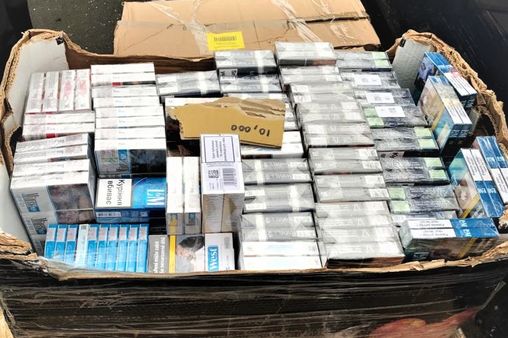
Drugs, makeup and 200,000 illegal cigarettes seized from shops and cars in Walsall.
More than 200,000 illegal cigarettes, prescription drugs and cosmetics have been seized during an operation in Walsall.
Around 27kg of hand-rolling tobacco was also secured during the operation, which saw the illicit items being taken from shops and vehicles across the borough.
Walsall Council’s Trading Standards team didn’t disclose the location of the seizures, which took place on Thursday, January 16.
Photos, which were shared by the team, shows dozens of packets of cigarettes placed in a brown box.
A spokesman said: “Today taking illegal tobacco from shops and vehicles in the borough. 220,000 cigs and 27Kg tobacco seized, along with illegal toys, prescription drugs and cosmetics! Teamwork.”
The news comes less than 24 hours after a Wolverhampton shop owner who sold and stashed around £200,000-worth of illegal and counterfeit cigarettes behind secret compartments was jailed.
Zemnako Azad Salih, who ran Sam Euro Style in Newhampton Road West, was handed the 28-month custodial sentence following a trial at Wolverhampton Crown Court on Wednesday, January 15.
https://www.birminghammail.co.uk/black-country/drugs-makeup-200000-illegal-cigarettes-17586158
Lear More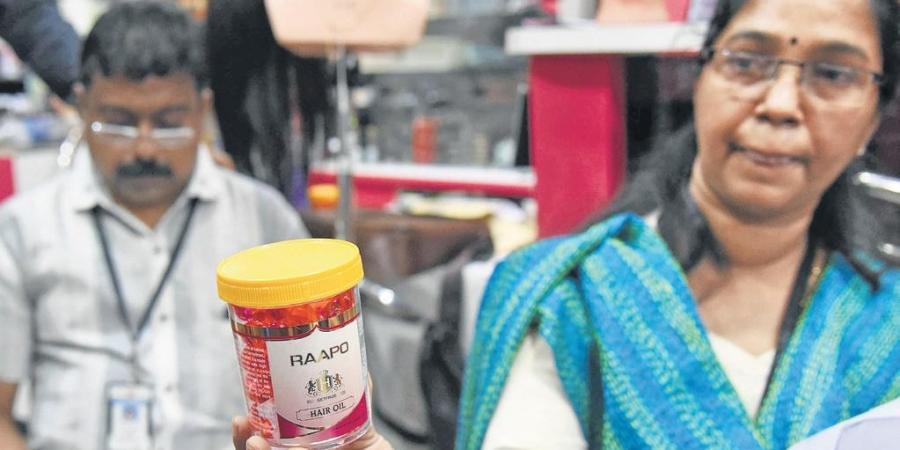
Fake cosmetics seized from Marine Drive shop.
KOCHI: Officials of the Drugs Control Department seized a huge quantity of fake cosmetic products from a wholesale shop functioning at a shopping complex at Marine Drive here on Thursday.
The officials said in the raid conducted at the cosmetic shop, ‘Midas’, it was found that products, including hair oil, henna powder, Vitamin E tablets, and facial creams, were stored in the shop without valid documents.
“The tablets and facial creams of fake brands were imported from China and illegally brought to Kochi,” said an official. The wholesale dealer has six branches in the state.
The raid was conducted following a complaint lodged by a Malappuram native who developed an allergic reaction after using a hair oil purchased from the shop.
“The details of the products, including dates of manufacturing and date of expiry, were not recorded on the packets. The manufacturers’ names were also missing. The shop owners also did not maintain bills and other documents,” said an officer.The seized products will be produced before the court and sent for quality control examinations.

Fake cigarettes on rise in Kerala.
Kochi: Sale and consumption of fake cigarettes are increasing alarmingly in Kerala. It is learned that these fake cigarettes are being sold in the state as Chinese cigarettes.
“The fake cigarettes are transported to Tamil Nadu through ships from Sri Lanka and Malaysia. From Tamil Nadu, it is taken to Kerala. The fake cigarettes are transported to Ernakulam via Idukki and collected at a godown in Perumbavoor,” reported excise officials.
Sale of fake cigarettes without paying the tax incurs huge revenue loss to the state government. At the same time, use of these cigarettes will lead to serious health issues too.
https://english.mathrubhumi.com/news/kerala/fake-cigarettes-on-rise-in-kerala-1.4448140
Lear More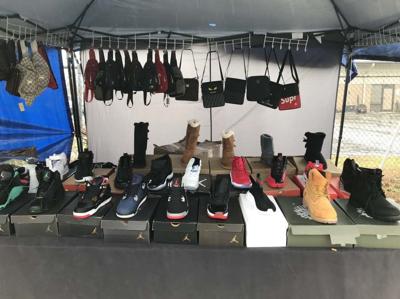
$460,000 in fake Air Jordans, UGGs, Rolexes and more seized in Greensboro; five arrested
GREENSBORO — State agents seized $460,000 worth of counterfeit products — Air Jordan shoes, UGG boots, Rolex watches, Gucci handbags and pirated CDs and DVDs — at a Greensboro flea market Saturday, according to the N.C. Department of the Secretary of State.
The estimated retail value is the amount the genuine trademarked items would sell for, the agency said Thursday in a news release.
Agents with the N.C. Anti-Counterfeiting Task Force discovered the knock-off designer apparel and accessories at The Flea flea market at 3220 N. O’Henry Blvd. in Greensboro, state officials said. Homeland Security Investigations and the Greensboro Police Department helped with the enforcement sweep.
Five people were charged with trademark violations. Ramon Vararro Poteat, 60, of Browns Summit, and Alhage Mohammed Secka, 51, of Raleigh were each charged with one count of felony criminal use of a counterfeit trademark. Three other flea market vendors were charged with misdemeanor trademark violations: Evette Delynn Daouda, 53, of Greensboro; Felicia Dianne Able, 46, of Greensboro; and Joey Ray Willis, 39, of Danville, Va.
Two crore worth gold seized at Mangalore Airport.
Mangalore, Jan 15 (UNI) In one of the biggest seizure of gold in the new decade, Directorate of Revenue Intelligence (DRI) sleuths here have seized five kg of gold valued at Rs two Crore from the Air Cargo Complex at International Airport here recently.
Acting on a tip-off the officers of Directorate of Revenue Intelligence (DRI) Bangalore and Mangalore in a co-ordinated effort unraveled a unique modus of smuggling of gold through Air Cargo Complex, at old airport, Bajpe Mangalore two days back, According to release issued here on Tuesday evening.
The smuggled gold was concealed in five metal sprockets which were imported by M/s Swaroop Mineral Pvt Ltd of Udupi in the name of “mining conveyor drive chain”.
The gold was deftly concealed inside the heavy metal sprockets by way of a groove and gave only slight hint of tampering on physical examination. The scanning of the said wheels added to the suspicion and finally the officers could retrieve the gold with the help of local mechanic and lathe machine at Bajpe.
On examination by the authorized Jeweller, five round plates weighed 4,995 grams by net weight after discounting the weight of aluminium coating. The gold pieces were found to be of 24 Karat purity and their current market value was placed at around Rs 2 Crore.
http://www.uniindia.com/two-crore-worth-gold-seized-at-mangalore-airport/south/news/1854178.html
Lear More


